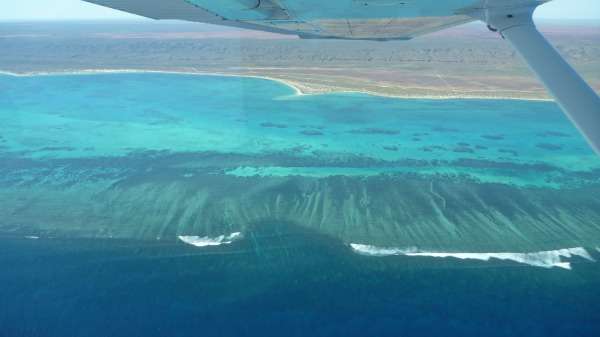Drawing connections between Ningaloo and Great Barrier reefs

Coral reefs are the most diverse of all marine systems. They are however, threatened by global change and we can only predict how it will impact these reef systems if we first understand how they work.
Common research practice involves sampling specific areas of the reefs and then using the data collected to develop models across the entire system, to predict patterns of fish species richness.
Data has been collected for the Great Barrier Reef (GBR) for the last 20 years, and models have also been developed for that system.
Our new discovery is that these data sets and models are not only critical to our understanding of the GBR, but that they can also be useful to understand other, less-studied reef systems.
This is called model transferability and it works by using a model originally developed for one system to predict out to another system.
We have developed a framework to improve model transferability across reef systems by comparing modelling results from the GBR, with those from a model developed specifically to Ningaloo Reef, while making predictions for Ningaloo Reef.
We found when both models were calibrated with data of the same temporal and spatial resolutions (for example, same year of data collection, sample sizes and transect lengths), transferability was surprisingly good: both the GBR and the Ningaloo Reef models predicted comparable spatial patterns for Ningaloo Reef.
This happened despite large differences in the environments of these two tropical ecosystems and their locations on opposite sides of the Australian continent.
These are the first results to show evidence that similar patterns of fish species richness can be predicted whether by designing new field work, collecting new data and developing a new model for Ningaloo Reef or by simply transferring the GBR model.
There is, of course, a lot of space for improvement within model transferability. However, its application is particularly exciting for use in locations where knowledge needs are high but research funds are scarce, such as in remote areas.
The transferability framework developed through this research can help guide the design of better and more efficient sampling programs and it is a great first step towards speeding-up the process of understanding how these important coral reef systems may be impacted and conserved.
More information: Ana M. M. Sequeira et al. Transferability of predictive models of coral reef fish species richness, Journal of Applied Ecology (2016). DOI: 10.1111/1365-2664.12578
Journal information: Journal of Applied Ecology
Provided by Science Network WA
This article first appeared on ScienceNetwork Western Australia a science news website based at Scitech.

















